It’s just weeks into 2023 and stakeholders throughout the media-marketing ecosystem have already moved pieces on the chessboard that is the future of video measurement. Four of the largest TV networks came together to form a committee focused on enabling multiple currencies and streaming measurement solutions on Jan. 9 — just two days before the launch of Nielsen’s long-awaited cross-platform measurement product, One Ads.
The moves, which followed smaller deals at the top of the year by ad-tech firms in the space, are the latest developments in the race to solve for cross-platform measurement in a fragmented media landscape that continues to be shaped by the growth of streaming. While the sands have been shifting for several years, 2023 could see the ad industry take major steps as it determines how to move on from the dominance of Nielsen, which is still reeling from an ongoing accreditation controversy.
“While it’s clear that Nielsen alone will no longer be the sole video measurement currency, it’s still unclear which of the many multiple currencies will eventually become part of a widely embraced industry toolkit,” IAB CEO David Cohen said in emailed comments. “Expect greater clarity to come in 2023 as the results of numerous tests come to light. We believe the industry will settle on 2-3 primary providers.”
Determining which offerings will rise as alternative currencies, how Nielsen’s role will evolve and how the upfronts — when upcoming programming is presented to potential advertisers — will be affected are likely to be top-of-mind concerns as marketers prepare for 2023. For media buyers, changes could cause more headaches than they solve, but that’s not likely to stop the biggest media sellers from pushing for a scenario where they have more options and more negotiating power.
A Joint Industry Committee
The formation of the Joint Industry Committee by Fox, NBCUniversal, Paramount, TelevisaUnivision and Warner Bros. Discovery, along with OpenAP and the Video Advertising Bureau (VAB), represents a major step by the TV industry. In the works for some time, the JIC will work to enable multiple currencies and establish cross-platform measurement solutions for streaming video as it seeks to have solutions in place before the 2024 upfronts — work that can’t happen if audience data remains completely siloed.
“You really need some of these common data sets available; you shouldn’t have them locked up in any one party’s hands [as] it creates bad dynamics,” said Kevin Krim, CEO of EDO. “The innovation should happen on technology and data science, not on who owns the best proprietary data set, because that holds back the whole marketplace.”
In the works for some time, the formation of the JIC sees the traditional TV community coming together to reduce Nielsen’s monopoly power. It replicates a European model that has set the standards for measurement methodology for years, and could boost competition and innovation in the space. If somewhat overdue, it is a natural evolution.
“The interests of the members are pretty well aligned,” said Ashwin Navin, co-founder and CEO of Samba TV. “The companies participating in this right now have substantial presence in broadcast and cable [and] they need to make sure they’ve got a methodology that accurately counts those impressions and integrates them with their streaming impressions.”
Absent from the JIC are companies that primarily focus on streaming, including Netflix, Amazon and, increasingly, Disney. As those platforms can grade their own homework and appoint their own measurement providers — as Disney has done with a number of providers and NBCU has done as well — innovation will look different than whatever the JIC settles on.
Streaming leader Netflix, which finally launched an ad-supported tier late last year, maintains that advertising could become at least 10% of its annual revenue. Likewise, GroupM’s Business Intelligence team recently suggested that the company could become a top 25 ad seller. As it prepares to take Paramount’s spot at the upfronts, Netflix’s expended deal with Nielsen could bolster the measurement company’s bets around streaming, which include a deal with Amazon Prime Video over its game-changing “Thursday Night Football” broadcasts.
“The model that everyone aspires to, be it now or when they grow up, is Google’s model, which basically has a vertical integration of audience, inventory and measurement,” Navin explained. “Your biggest customers are going to demand third-party validation… so you need your own data and measurement methodology to tell your story and sell your product. You also reinforce that with third-party measurement from a best-of-breed group of providers.”
Nielsen isn’t going anywhere
No matter how successful the JIC is at coming together to make strides in measurement and alternative currencies, Nielsen is unlikely to lose its monopolistic position, at least in the next few years.
“Nielsen is not going anywhere, but there is massive competition and innovation in TV advertising measurement,” said EDO’s Krim. “Nielsen is incredibly deeply embedded in the buying and selling of TV advertising… those kinds of situations change very gradually.”
Along with working to win back MRC accreditation, Nielsen this month also launched its cross-platform measurement product. The first piece of its Nielsen One framework, Nielsen One Ads seeks to offer a consistent and deduplicated view of ads across linear TV, connected TV (CTV), desktop and mobile. But no matter how effective its new offerings prove to be, the company’s difficulties have given the industry a glimpse of a future where the company isn’t as dominant.
“The industry over the last couple of years has decided that they don’t want to have a monopoly commanding 3% of every transaction. So no matter how great it is, the headwinds for them are pretty significant,” said Samba TV’s Navin.
While media conglomerates and their partners focused on innovation tests last year, 2023 could see thousands of campaigns measured outside of the Nielsen currency, with NBCU and others scaling up their previous tests of various alternative measurement providers. Still, the formation of the JIC and an increase in alternative currency deals are not likely to have a real effect on transactions until 2024 — especially when one half of the business is not particularly concerned with Nielsen’s difficulties and developments.
“The buy side is not particularly frustrated with Nielsen. Nielsen doesn’t charge them as much as it charges the sell side, and there’s a lot of simplicity for the buy side of having a single currency to look at,” Krim explained. “A lot of these alternative currency players are pounding their chests and saying, ‘We’re going to take down the Nielsen hegemony’ — on the buy side, it just will make their lives much more complicated.”
In the end, alternative currencies and cross-platform measurement are the first step in providing advertisers a clearer picture of who is seeing their ads. The next step — determining which ad views turn into conversions and which drove brand outcomes — is of greater import to marketers, especially as ad budgets tighten and stakes rise amid economic uncertainty.
“Marketers have told us that they want (and need) to deeply understand the behavioral groups they’re reaching. They want outcomes married to currencies,” said Chris Kelly, CEO of brand analytics platform Upwave, in emailed comments. “All currency providers need to be prepared to tie their ratings to outcomes, because if not, nothing else matters.”
Source: here


